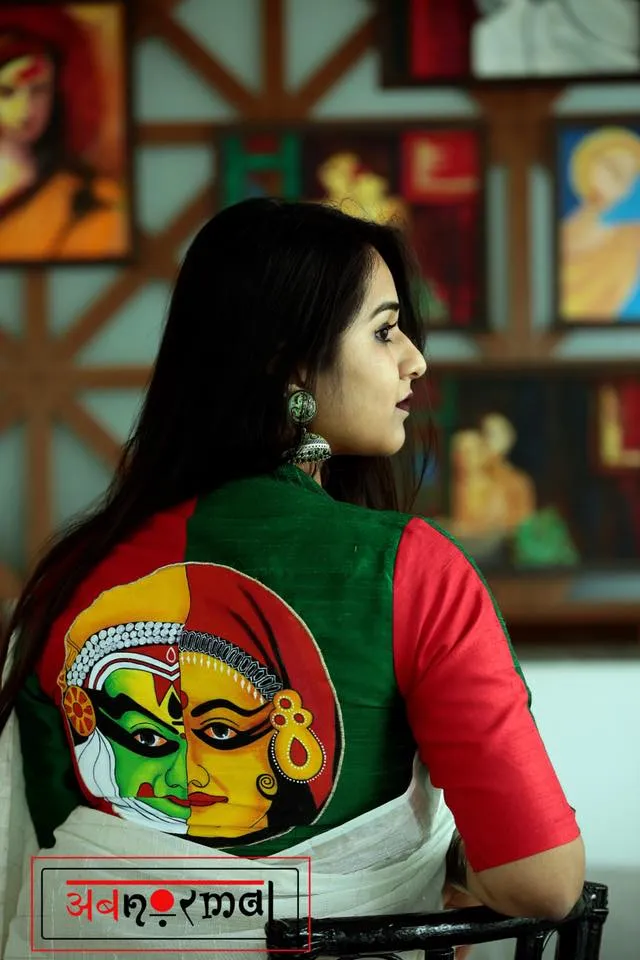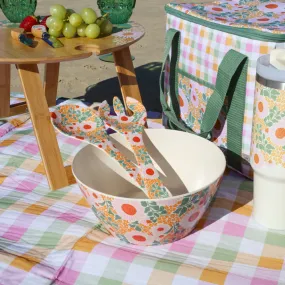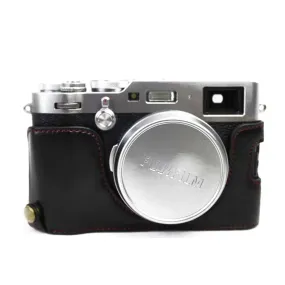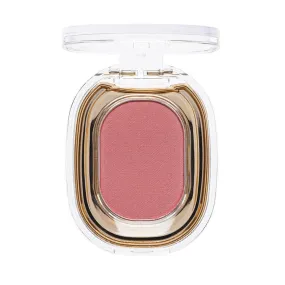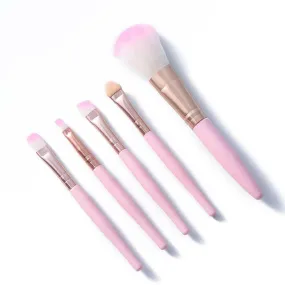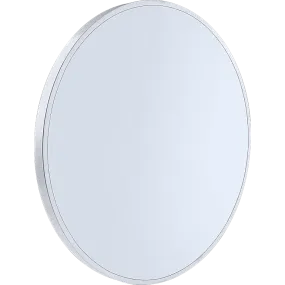Bold and elaborate, the Kathakali choli is an ode to dance, drama and classic artistry, with a dual colour scheme that represents the masculine and feminine dancers.
NOTE: Sari is model's own and is not for sale.
[custom tab]
Kathakali (കഥകളി) is one of the major forms of classical Indian dance. It is a "story play" genre of art, but one distinguished by the elaborately colorful make-up, costumes and facemasks that the traditionally male actor-dancers wear. The term Kathakali is derived from Katha (Sanskrit: "कथा") which means "story, or a conversation, or a traditional tale", and Kali (from Kala, "कला") which means "performance and art".
The traditional themes of the Kathakali are folk mythologies, religious legends and spiritual ideas from the Hindu epics and the Puranas. The vocal performance has traditionally been performed in Sanskritised Malayalam. In modern compositions, Indian Kathakali troupes have included women artists too.
Of all classical Indian dances, Kathakali has the most elaborate costuming consisting of head dresses, face masks and vividly painted faces.
The makeup follows an accepted code, that helps the audience easily identify the archetypical characters such as gods, goddesses, demons, demonesses, saints, animals and characters of a story. Seven basic makeup types are used in Kathakali, namely Pachcha (green), Pazhuppu (ripe), Kathi(knife), Kari, Thaadi, Minukku and Teppu. These vary with the styles and the predominant colours made from rice paste and vegetable colors that are applied on the face.
- Pachcha (green) with lips painted brilliant coral red portrays noble characters and sages such as Krishna, Vishnu, Rama, Shiva, Surya, Yudhishthira, Arjuna, Nala and philosopher-kings.
- Tati (red) is the code for someone with an evil streak such as Ravana, Dushasana and Hiranyakashipu. Some characters have green face (representing heroic or excellences as a warrior) with red dots or lines on their cheeks or red colored mustache or red streaked beard (representing evil inner nature), while others have full face and beard colored red, the latter implying excessively evil characters.
- Kari (black) is the code for forest dwellers, hunters, and middle ground character.Demonesses and treacherous characters are also painted black but with streaks or patches of red.
- Yellow is the code for monks, mendicants and women.
- Minukka (radiant, shining) with a warm yellow, orange or saffron typifies noble, virtuous feminine characters such as Sita, Panchali and Mohini.Men who act the roles of women also add a false top knot to their left and decorate it in a style common to the region.
- Vella Thadi (white beard) represents a divine being, someone with virtuous inner state and consciousness such as Hanuman.
- Teppu are for special characters found in Hindu mythologies, such as Garuda, Jatayu and Hamsa who act as messengers or carriers, but do not fit the other categories.
Face masks and head gear is added to accentuate the inner nature of the characters. The garments colors have a similar community accepted code of silent communication.
Presenting our Kathakali choli in a zara hatke style that is oh so अबnoरmal!
- Half Red. Half Green. Red representing the evil streak & Green the virtuous streak.
- Half Male. Half female painted faces.
Pachcha (green) with lips painted brilliant coral red portrays a noble male character. While the Minukka (radiant, shining) with a warm yellow, orange or saffron typifies a noble, virtuous feminine character.
Material : Pure Raw Silk in Red & Green. Colors may appear slightly different in a picture.
Sizes: The choli comes in standard ready to wear sizes 34 to 48 with a 2 inch margin inside for alterations.
Custom sizes are possible at an extra cost. Provided upon request.
[/custom tab]




